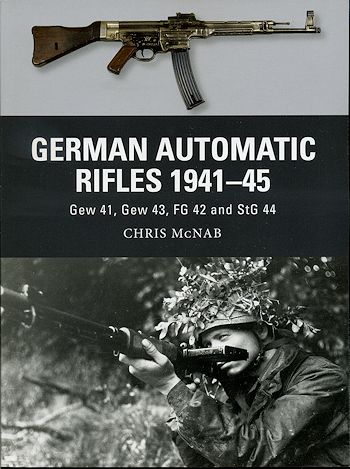 Of all the
fighting powers, only the United States entered the war with what we would call
an automatic rifle, the M1 Garand. This rifle was developed to allow the soldier
the chance to get of several rounds without reloading or having to operate a
bolt as in the usual bolt action rifle. This savings in time could easily be the
difference in surviving an encounter or not.
Of all the
fighting powers, only the United States entered the war with what we would call
an automatic rifle, the M1 Garand. This rifle was developed to allow the soldier
the chance to get of several rounds without reloading or having to operate a
bolt as in the usual bolt action rifle. This savings in time could easily be the
difference in surviving an encounter or not.
While the M1 was not a perfect rifle in that it only
held a clip of eight, it was well manufactured, and was built in the sort of
numbers that pretty well meant that every soldier could have one. Even the
Soviets had one, the SVT-38, though that was not as widely used. However, it was
an automatic rifle and it was the basis of the Gew-41 and Gew-43, which were
capable weapons, but they were large, relatively heavy and not built in large numbers. Like
most automatic rifles, they had to be kept meticulously clean to prevent
jamming.
What was needed was something lighter and smaller.
Something that, say, a paratrooper could use. German paratroopers were hampered
by a poorly designed parachute that meant that the trooper's larger weapons
(like their rifles) had to be dropped separately. If these landed far away from
the trooper, then this was a bad thing as the soldier had nothing to fight with
until it was retrieved. The FG 42 was an answer to this. It was an automatic
rifle that was short, light, and could be carried by the trooper. Of course, by
the time it was developed, there were no more mass drops, but at least the
soldier had an automatic rifle and one that held a decent number of bullets as
well before reload.
Then there was the StG 44. This was a mostly stamped
steel weapon that most consider the basis of all modern assault weapons,
including the AK-47. It had a pistol grip as well as a stock, the ability to
hold a 30 round curved clip, was able to be built rather quickly and was
reliable. However, like many things in war, the gun came too late and was built
in too few numbers to make any dent in the outcome.
In this book, author Chris McNab covers the development
of automatic rifles including those developed by other countries and how they
influenced German design. Each of the major types, Gew 41/43, FG 42 and StG 44
are fully covered in their means of operation and their development. The book
has many period photos as well as photos of extant guns. This is further
enhanced by a few nicely done pieces of artwork showing these guns in use.
It is a great addition to the Weapons line of books and
is a title that any enthusiast needs to have on their shelf.
May 2013
For more on the complete line of Osprey books,
visit www.ospreypublishing.com
or contact them at Osprey Direct, PO Box 140, Wellingborough, Northants,
NN8 2FA, UK. In the US, it is
Osprey Direct at 44-02 23rd St, Suite 219, Long Island City, NY 11101., where you can
get a catalogue of available books.
If you would like your product reviewed fairly and quickly, please
contact
me or see other details in the Note to
Contributors.
 Of all the
fighting powers, only the United States entered the war with what we would call
an automatic rifle, the M1 Garand. This rifle was developed to allow the soldier
the chance to get of several rounds without reloading or having to operate a
bolt as in the usual bolt action rifle. This savings in time could easily be the
difference in surviving an encounter or not.
Of all the
fighting powers, only the United States entered the war with what we would call
an automatic rifle, the M1 Garand. This rifle was developed to allow the soldier
the chance to get of several rounds without reloading or having to operate a
bolt as in the usual bolt action rifle. This savings in time could easily be the
difference in surviving an encounter or not.